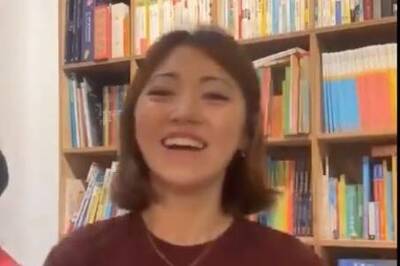《TAIPEI TIMES》 Proposed asteroid names approved

National Museum of Natural Science Director-General Sun Wei-hsin, center, Lulin Observatory director Lin Hung-chin, left, and observatory assistant Lin Chi-sheng pose with a model of an asteroid at a ceremony at the museum in Taichung yesterday. Photo courtesy of National Museum of Natural Science
LOCAL DISCOVERIES: Participants at a meeting of the Astronomical Society yesterday celebrated the naming of the asteroids and marked International Museum Day
By Rachel Lin / Staff reporter
Taiwan’s proposal to name two asteroids discovered by Nantou County’s Lulin Observatory “Kerboguan” and “Sunweihsin” has been approved by the International Astronomical Union.
“Kerboguan” comes from the Chinese name for Taiwan’s first science museum: the National Museum of Natural Science. The Taichung museum is the nation’s biggest and has been visited by nearly 100 million people since its opening in 1986.
Sunweihsin was named after the museum’s director, astronomer Sun Wei-hsin (孫維新). He also served as director of National Central University’s Graduate Institute of Astronomy from 1995 to 1998 and helped establish the Lulin Observatory in 1999.
Sun is well-known for promoting science activities and exhibitions in creative and interesting ways.
The museum and National Central University yesterday held a ceremony at a meeting of the Astronomical Society to celebrate the naming of the asteroids and mark International Museum Day.
Kerboguan (asteroid No. 207655) was discovered by Lulin Observatory assistant Lin Chi-sheng (林啟生) and US California Institute of Technology astronomer Ye Quan-zhi (葉泉志) on July 25, 2007, the university said.
With a width of 1km to 3km, the asteroid takes 3.45 years to orbit the sun, it said, adding that Kerboguan is 270 million kilometers from the sun at the closest point of its orbit and 410 million kilometers away at its farthest point.
Sunweihsin (asteroid No. 185364) was discovered by Ye and Lulin Observatory director Lin Hung-chin (林宏欽) on Nov. 12, 2006, the university said.
It also measures 1km to 3km wide and takes 3.76 years to orbit the sun, it said, adding that Sunweihsin is 310 million kilometers from the sun at the closest point of its orbit and 420 million kilometers away at its farthest point.
Asteroids are the only celestial bodies that can be named by the people who discover them, it added.
After identifying an asteroid, the observer needs to report the discovery to the Minor Planet Center, which will give the asteroid a temporary identification number.
Scientists observe the asteroid at least four times and ensure that its orbit can be measured before giving it a permanent number.
After that, the discoverer is allowed to name it.
It can take years before the name of an asteroid is settled, as any proposal must be reviewed by a special working group of the International Astronomical Union.
新聞來源:TAIPEI TIMES
%http://www.taipeitimes.com/












